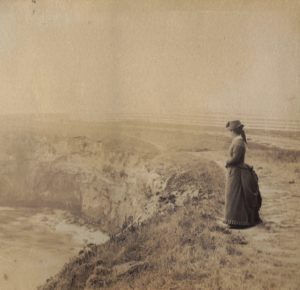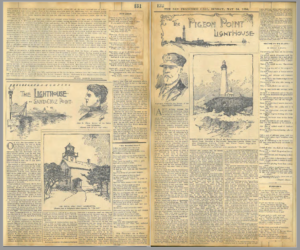Explore the late 19th century scrapbook of an extraordinary lighthouse keeper, naturalist, and collector, Laura Hecox.

Laura Hecox was an extraordinary woman: a brilliant amateur scientist (she even had species named after her!). Laura was the Santa Cruz lighthouse keeper from 1883 to 1916, and a renowned collector whose lighthouse museum was known far and wide. Her collection of natural history specimens, artifacts, and curios was gifted to the people of Santa Cruz in 1904 and is the foundational collection of the Santa Cruz Museum of Natural History. While Laura meticulously cataloged her collection, she kept no known diary. Contemporary authors reference her scientific correspondence, yet none of these writings is known to have survived. Laura was, however, an avid scrapbooker. We are excited to provide complete access to the largest of Laura’s surviving scrapbooks. The scrapbook featured here is one of the few means by which we can learn more about Laura’s private life and the historical context in which she lived.
Her interests on the page were just as diverse as when collecting physical materials. In her scrapbook, beginning with an 1895 article on women lighthouse keepers, you will see articles on topics ranging from shell identification, bay area architecture, and women’s suffrage. We are always eager to learn more about Laura, as well as the natural and cultural history of late 19th century Santa Cruz. If you have any questions about the scrapbooks content, or want to chat about cool discoveries, email us at collections@santacruzmuseum.org

We are proud to represent Laura’s legacy. However, the content reflected in these clippings is historical in nature. The views and opinions expressed within are not necessarily those of the museum itself.
This project is indebted to the ongoing research legacy of Frank Perry, and is made possible by a partnership with the Santa Cruz Public Libraries.
